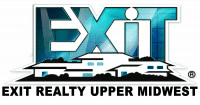Not sure if Exit Realty is right for you?
Talk to a Franchise Advisor who can match you with your perfect franchise based on your goals, experience, and investment range.
Talk to an Expert
Exit Realty Upper Midwest
Upper Midwest Realty, Inc.
1-651-560-3234
FDD Version:
How much does Exit Realty Upper Midwest cost?
Initial Investment Range
$60,800 to $212,000
Franchise Fee
$7,500 to $25,000
The EXIT Franchise purchaser will operate a real estate sales office.
No risk review available
No risk review was found for this FDD. Please check back later.
Disclaimer: We do not guarantee the accuracy of this data. The data is parsed from the FDD using AI which makes mistakes. Please refer to the full Franchise Disclosure Document (FDD) for complete and accurate information before making any investment decisions.










